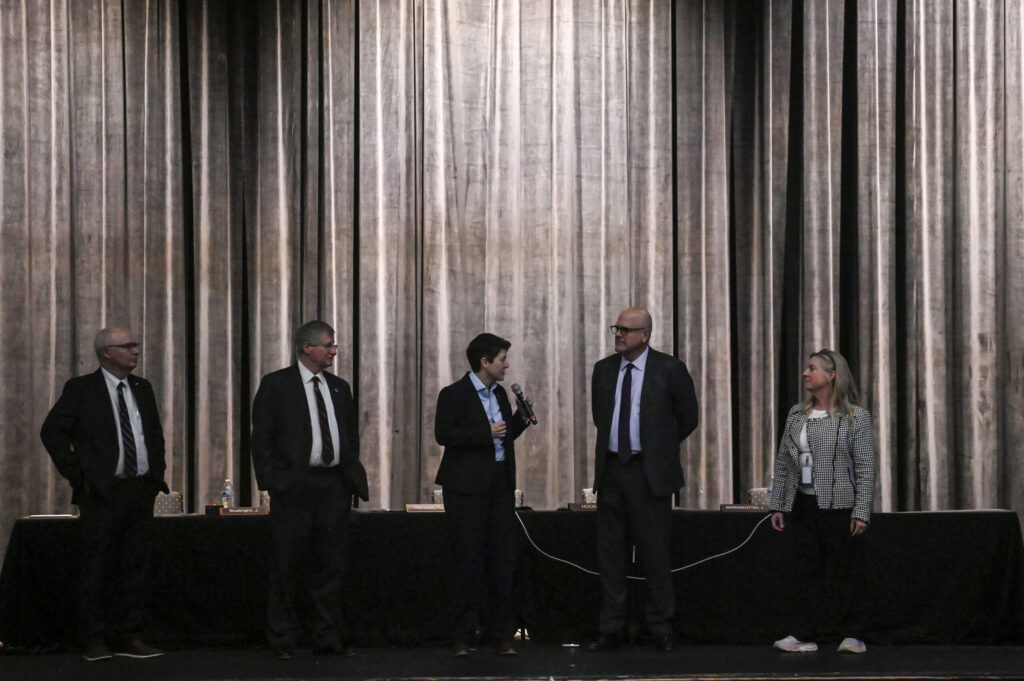Colorado justices ease path for successful civil defendants to turn around, sue plaintiffs
The Colorado Supreme Court on Monday embraced a lower hurdle for successful defendants in civil cases to turn around and sue the plaintiffs for allegedly entangling them in baseless litigation.
A person may sue for malicious prosecution when someone knowingly initiates a criminal or civil legal proceeding that lacks merit and the case ends in the person’s favor. Among other things, the party alleging malicious prosecution must establish there was no probable cause to initiate the original proceeding in the first place.
However, the question for the Supreme Court revolved around how heavily trial judges should rely on the original proceeding when looking at probable cause. Specifically, if a judge in the original case opted to advance the lawsuit all the way to a jury trial, does that automatically suggest probable cause existed all along?
No, it does not, concluded the court.
Justice Maria E. Berkenkotter wrote that there were “fairness” concerns about blocking a later malicious prosecution lawsuit when it might be difficult to know why a given trial judge chooses to deny a motion for summary judgment — which happens when there are key disputed facts that could lead a jury to apply the law in favor of either side.
“One judge might deny voluminous cross-motions for summary judgment with a detailed, thoughtful order while another judge might deny similar motions with a three-line ruling stating that there are disputed issues,” Berkenkotter, a former trial judge, wrote in the June 16 opinion. “It is possible that the second judge simply didn’t have time to ‘show their work.’ Or it may be that the first judge’s order was the result of a great deal more time, thought, and effort.”
In the case before the Supreme Court, the litigants cautioned that the debate over how much weight a judge should place on what happened in a prior civil case could incentivize the filing of malicious prosecution lawsuits or, on the other hand, prevent successful defendants from seeking accountability for bad-faith litigation. Conceivably, it could also alter behavior within individual cases.
Patricia Ann Scott originally sued Steamboat Springs real estate broker Kaylee Schnelle, accusing Schnelle of professional negligence for the way she marketed Scott’s commercial property. Schnelle moved for summary judgment, but a judge believed there were disputed issues for a jury to resolve.
At trial, Schnelle also moved for a directed verdict in her favor after Scott presented her case, but the judge similarly denied that motion. The jury ultimately sided with Schnelle.
Schnelle then sued Scott and Scott’s lawyers for malicious prosecution. The defendants moved to dismiss, focusing on one of the elements of malicious prosecution: lack of probable cause. By rebuffing Schnelle’s motions to end the professional negligence case, they reasoned, the original trial judge found probable cause of Schnelle’s wrongdoing — even if she ultimately prevailed.
Chief Judge Michael A. O’Hara III, who was also the judge in the original civil case, noted there were two schools of thought from courts around the country. Some states’ courts treat the denial of a defendant’s summary judgment motion or directed verdict as generally fatal to a later claim of malicious prosecution. Other states use it as “just a factor” to consider. O’Hara opted to treat the prior rulings as a factor and declined to dismiss Schnelle’s malicious prosecution claim.
A Court of Appeals panel agreed with that approach. Judge Christina F. Gomez expressed concerns about giving significant weight to a pretrial ruling in another case — which “almost certainly wasn’t subject to any potential appellate review” — when deciding whether to bar a later malicious prosecution lawsuit.
The defendants in Schnelle’s case appealed to the Supreme Court, arguing the Court of Appeals’ decision would make it easier to pursue retaliatory lawsuits and increase legal costs.
“I did business litigation for a long time and there was one judge — I’m not gonna say who or where — I filed a fulsome motion for summary judgment,” Justice Richard L. Gabriel recalled during oral arguments, “and the judge’s practice was to write ‘denied’ on the cover every time.”
Gabriel added some judges will always be hesitant to decide that a defendant should prevail as a matter of law, without the need for a jury to adjudicate conflicting facts.
“Particularly in a commercial litigation where you’ve got hundreds of pages of exhibits on both sides and it is not unreasonable for judge to say, ‘There’s gotta be a fact question here somewhere,'” he said.
The Supreme Court ultimately agreed a judge’s decision to advance the case to a jury trial is only a factor to consider in a later malicious prosecution lawsuit. Among other factors, Berkenkotter wrote, were the potential presence of perjury or misleading evidence in the original case, and how detailed the original judge’s order was.
Allowing the original order to heavily influence the outcome of the later case, she continued, would require litigants “to prove why something did not occur, why evidence does not exist, or to divine what a trial court judge was thinking,” which could be “insurmountable” in some instances.
The case is Cantafio et al. v. Schnelle.
Colorado Politics Must-Reads:














